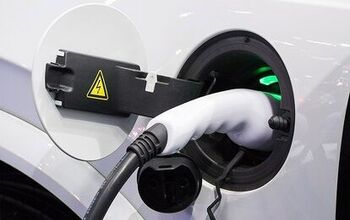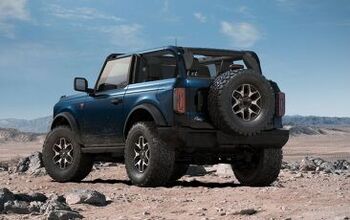Worth the Weight?
Obesity is rampant in America. Between the Center for Disease Control’s dire reports, documentaries like “Honey We’re Killing the Kids” and endless infomercials for every diet and exercise program imaginable, it’s obvious we’re becoming a nation of Fat Bastards and Sherman Klumps. Now the Environmental Protection Agency is sounding the alarm about our cars. The EPA recently announced that America’s vehicle fleet is the heaviest it’s been since Ford touted the Pinto’s “road hugging weight” as a safety feature. Our cars and trucks, like their drivers, are piling on the pounds.
Let's face it: most vehicles sold in America are obese. Today’s average car is portlier than a binge-eating sumo, while your standard issue full-size SUV weighs as much as a fully-grown hippopotamus. In 1987, the U.S. fleet average was 3220 lbs. In 2006, the average US vehicle tips the scales at a scarcely credible 4142 lbs. In a time of high gas prices, when we should be building cars that eke out the last mpg, this makes no sense at all. Or does it?
In the intervening years, federally mandated safety equipment and the commercial importance of crash test ratings have added weight to America’s fleet. But, in 2001 (the last year where I could find applicable data), safety equipment accounted for only 125 lbs. of an average vehicle’s total weight. It’s risen since then, but even if you double this figure it’s still a far cry from the over 900 lbs. increase over the past 19 years.
Clearly, manufacturers have met passive safety requirements without resorting to simple fortification. In fact, the weight gain comes in spite of an upsurge in lighter-weight automotive materials. Cars were once built almost entirely out of ferrous materials; today’s vehicles are constructed with less than 65% steel. The remainder consists of materials like plastic, aluminum, magnesium, titanium and balsa wood. Yet vehicles keep adding poundage.
Of course, it takes energy to move all this mass around. While most manufacturers meet federal Corporate Average Fuel Economy standards (save fine-paying miscreants like BMW), almost every single carmaker has shown a lamentable decrease in overall fuel economy during the past three years. As weight goes up, so does fuel consumption. It doesn’t take a genius to figure that one out, so why can’t carmakers cut the crap? Why aren’t they doing more to decrease the weight of their products across the board?
The bottom line is the bottom line. The auto companies are in business to make money (Ford’s and GM’s recent performances notwithstanding). Large SUV’s and pickups are far more profitable than passenger cars. Automakers have been doing everything they can to push as many of these money-makers into the hands of the consumer as possible. Until recently, the car-buying public rushed to them like bomb shelters in Baghdad, oblivious to their appetite for Jurassic juice. As car makers sold entire flotillas of big-ass behemoths, they’ve driven the average weight stats higher and the fuel economy averages lower.
Consumers who wouldn’t even think of buying an SUV or pickup truck are also contributing to the trend toward excess automotive avoirdupois. Once upon a time, electric windows, remote alarms and power door locks were a luxury. Just ten years ago, sunroofs, automatic climate control and sat nav systems were restricted to luxury cars. Today, all these toys are available in the most basic econobox, and a “necessity” in any car with upmarket pretensions. Extra goodies, extra weight. No wonder the two-door Honda Civic has porked-up nearly 400 pounds over the past 10 years.
So what’s the solution to this weighty problem? U.S. car makers must get serious about slimming down. Earlier this summer, several automakers established weight targets for parts and asked suppliers to redesign them accordingly. That’s an excellent step in the right direction, but they need to go further. Every manufacturer redesigning their products– from economy cars to mid-size sedans to full-size SUV’s– needs to make weight loss a top priority. They should trim vehicle weight by at least 20% while maintaining utility. And why not? In 1977, GM downsized their entire full-sized passenger car lineup and watched sales go up. It’s time for an encore.
The American Plastics Council estimates every 10 percent reduction in weight delivers a seven percent increase in fuel efficiency. If the 5342 lbs. Chevrolet Tahoe lost 20% of its fat, urban mpg would rise from 16 to 18.24 mpg. But fuel economy isn’t the only benefit. Can you image thrashing a Pontiac Solstice that weighed 500 lbs. less? Or how much more tossable a Honda Civic hatchback would be with today’s power at ‘96’s weight? For pistonheads, “road hugging weight” is as undesirable today as it was in the 70’s. No matter how you look at it, it’s time for all U.S. vehicles to go on a diet.
More by Frank Williams
Latest Car Reviews
Read moreLatest Product Reviews
Read moreRecent Comments
- Redapple2 I gave up on Honda. My 09 Accord Vs my 03. The 09s- V 6 had a slight shudder when deactivating cylinders. And the 09 did not have the 03 's electro luminescent gages. And the 09 had the most uncomfortable seats. My brother bought his 3rd and last Honda CRV. Brutal seats after 25 minutes. NOW, We are forever Toyota, Lexus, Subaru people now despite HAVING ACCESS TO gm EMPLOYEE DISCOUNT. Despite having access to the gm employee discount. Man, that is a massive statement. Wow that s bad - Under no circumstances will I have that govna crap.
- Redapple2 Front tag obscured. Rear tag - clear and sharp. Huh?
- Redapple2 I can state what NOT to buy. HK. High theft. Insurance. Unrefined NVH. Rapidly degrading interiors. HK? No way !
- Luke42 Serious answer:Now that I DD an EV, buying an EV to replace my wife’s Honda Civic is in the queue. My wife likes her Honda, she likes Apple CarPlay, and she can’t stand Elon Musk - so Tesla starts the competition with two demerit-points and Honda starts the competition with one merit-point.The Honda Prologue looked like a great candidate until Honda announced that the partnership with GM was a one-off thing and that their future EVs would be designed in-house.Now I’m more inclined toward the Blazer EV, the vehicle on which the Prologue is based. The Blazer EV and the Ultium platform won’t be orphaned by GM any time soon. But then I have to convince my wife she would like it better than her Honda Civic, and that’s a heavy lift because she doesn’t have any reason to be dissatisfied with her current car (I take care of all of the ICE-hassles for her).Since my wife’s Honda Civic is holding up well, since she likes the car, and since I take care of most of the drawbacks of drawbacks of ICE ownership for her, there’s no urgency to replace this vehicle.Honestly, if a paid-off Honda Civic is my wife’s automotive hill to die on, that’s a pretty good place to be - even though I personally have to continue dealing the hassles and expenses of ICE ownership on her behalf.My plan is simply to wait-and-see what Honda does next. Maybe they’ll introduce the perfect EV for her one day, and I’ll just go buy it.
- 2ACL I have a soft spot for high-performance, shark-nosed Lancers (I considered the less-potent Ralliart during the period in which I eventually selected my first TL SH-AWD), but it's can be challenging to find a specimen that doesn't exhibit signs of abuse, and while most of the components are sufficiently universal in their function to service without manufacturer support, the SST isn't one of them. The shops that specialize in it are familiar with the failure as described by the seller and thus might be able to fix this one at a substantial savings to replacement. There's only a handful of them in the nation, however. A salvaged unit is another option, but the usual risks are magnified by similar logistical challenges to trying to save the original.I hope this is a case of the seller overvaluing the Evo market rather than still owing or having put the mods on credit. Because the best offer won't be anywhere near the current listing.


































Comments
Join the conversation
A psychologist friend of mine believes that all the safety equipment in todays' cars makes them LESS SAFE. His reasoning is that drivers will take many more chances, chances they wouldn't normally take, because they put too much faith in all the safety systems in a car. He says that if you want to see safer driving, instead of putting in airbags in the steering wheel, they should put a sword facing the driver there.
at 6'3" and well into the deepside of 200 lbs (football player). . .i have managed to fit myself into a lotus exige. . .it was sure a challenge, but not impossible. . . you can fit into a civic!